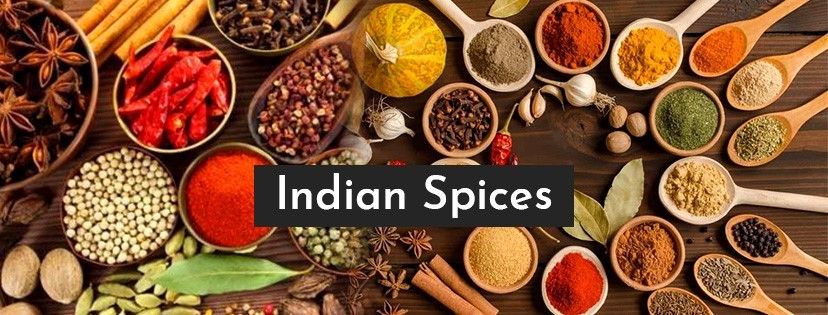
India, a land of vibrant colors, diverse cultures, and rich history, owes much of its allure to its aromatic bounty: spices. The Use of Spices in ancient India wasn't just about enhancing the flavor of food; it was deeply intertwined with the socio-economic fabric, agricultural practices, and global trade networks of the time. This article explores the fascinating history of spice usage in ancient India, delving into the Types of Spices cultivated and consumed, their role in cuisine, and their profound impact on shaping India's identity and global interactions.
The story of Spices in India begins long before recorded history. Archaeological evidence suggests that the Indus Valley Civilization (circa 3300-1700 BCE) was already familiar with and utilizing various spices. Excavations have revealed traces of spices like long pepper, black pepper, asafoetida, and salt, indicating their culinary significance. This early use signifies a sophisticated understanding of flavouring agents and their preservation properties. These spices, along with others, were likely incorporated into daily diets, contributing to both the palatability and preservation of food.
As agrarian societies flourished, the cultivation of spices became an integral part of Indian agriculture. While some spices like cardamom, long pepper, black pepper, turmeric, and asafoetida were commonly found across generations, others were imported from regions like Afghanistan and Central Asia, enriching the spice palette available to ancient Indians. This reflects the early development of trade networks and the desire for more diverse flavours. The importance of agriculture, including spice cultivation, formed the backbone of the Indian economy, with spices used for both self-consumption and trade.
Religious texts, particularly those of Buddhism and Jainism, also provide insights into spice usage. While advocating for vegetarianism, these traditions recognized the importance of flavor. Five varieties of salt – sea salt, black salt, rock salt, kitchen salt, and red salt – were commonly used. They were often paired with spices like pepper, long pepper, cumin, asafoetida, myrobalan, dry ginger, turmeric, mustard, and clove. Furthermore, vinegar and sour gruel were used to garnish food, demonstrating a comprehensive approach to culinary arts.
The Maurya Empire (322-185 BCE) marked a significant era for spice cultivation and utilization. Kautilya, the chief advisor to Emperor Chandragupta Maurya, emphasized the importance of agriculture and the efficient management of resources in his treatise, the Arthashastra. Under the supervision of the superintendent of salts, farmers cultivated six types of salts, along with four types of cardamoms (white, reddish-white, short, and black mottled), as well as other spices such as long pepper, ginger, cumin seeds, white mustard, coriander, cloves, and turmeric. Cinnamon and other aromatics were also produced, and vinegar, made from sugarcane juice, guda (jaggery), and honey, was popular. This demonstrates a structured and organized approach to spice production and distribution during the Maurya period.
During the Gupta period (320-550 CE), the use of spices continued to evolve and diversify. Spices such as dry ginger, cumin, mustard, coriander, myrobalan, long pepper, black pepper, cloves, cardamom, turmeric, and asafoetida were commonly used. Black pepper was predominantly grown near the sea shores, while asafoetida, also known as Bahlika, was imported from Afghanistan. The Gupta period witnessed a flourishing of arts, sciences, and literature, and culinary practices were no exception. The use of spices reflected a sophisticated and refined palate.
The appeal of Indian spices extended far beyond the borders of the subcontinent. The unique flavours and aromas captivated ancient Romans and Arabs, who embarked on long and arduous journeys to acquire these precious commodities. This vibrant spice trade transformed India into one of the richest regions in South Asia. The demand for Indian spices continued to grow in later centuries, attracting European powers like the English and Dutch, who established trading posts and ultimately dominated the spice trade. The legacy of this trade is deeply intertwined with the history of colonialism and globalization.
The magic of Indian spices lies not only in their ability to enhance the flavor of food but also in their medicinal properties. Many spices, such as turmeric and ginger, have long been used in traditional Ayurveda medicine for their anti-inflammatory, antioxidant, and digestive benefits. This holistic approach to spices, recognizing their culinary and medicinal value, is a testament to the wisdom of ancient Indian practices.
The enduring popularity of spices in India reflects a deep-seated cultural preference for flavourful and aromatic cuisine. The use of spices is an integral part of Indian identity, shaping culinary traditions and influencing the way food is prepared and consumed. From humble home kitchens to elaborate royal feasts, spices have always been central to the Indian culinary experience.
In conclusion, the use of spices in ancient India is a multifaceted story that encompasses agriculture, trade, cuisine, and medicine. From the Indus Valley Civilization to the Gupta Empire, spices played a pivotal role in shaping the cultural and economic landscape of the region. The allure of Indian spices attracted traders from distant lands, contributing to the growth of global trade networks. The aromatic legacy of Ancient India continues to resonate today, as Indian cuisine remains celebrated worldwide for its diverse flavours and the skillful use of spices.